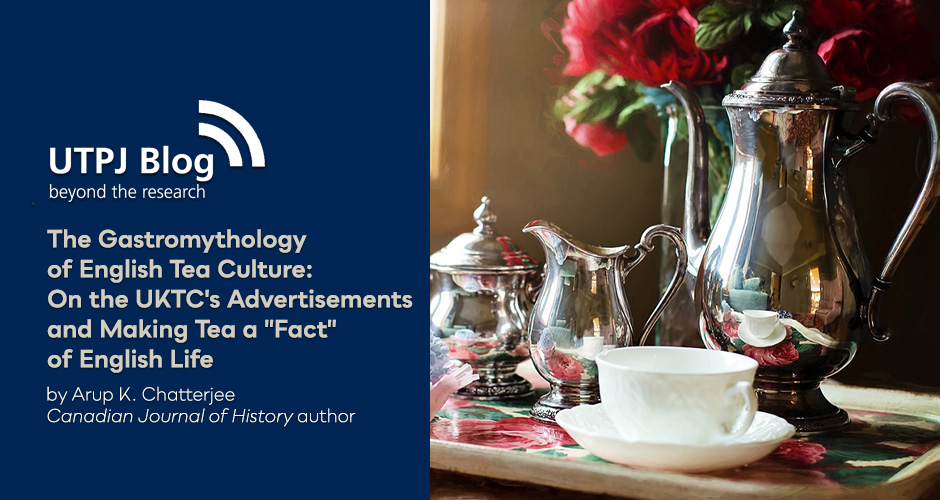
Written by guest blogger Arup K. Chatterjee.
Many assumptions of culture, economy, politics and ideology lurk underneath the surface of conversations around food and foodways. Twentieth-century French theorist Roland Barthes recognized that representations of social realities in popular culture often created myths to suit dominant ideologies. His book Mythologies (1957) studied a wide range of cultural artefacts, from advertising to cookery shows to food habits to state insignia. Barthes concluded that, often, cultural gatekeepers extract signs or symbols from their original contexts and artificially inseminate meaning onto them. Barthes’s semiotic theory continues to be relevant, perhaps more so today. For Barthes, a myth is not necessarily a lie but ‘a type of speech’ that works less by the literal meaning of its message and more ‘by the way in which it utters this message.’ A particularly interesting area in which we can see Barthes’s theory manifest itself is that of culinary signs and food advertising.
My paper, ‘The Gastromythology of English Tea Culture: On the UKTC’s Advertisements and Making Tea a ‘Fact’ of English Life,” expounds on Barthes’ notion of mythologies to coin the concept of ‘gastromythology,’ which is relevant to the domain of studies on foodways and food politics. The word ‘gastromythology’ is derived from ‘gastromyth’, which, interestingly, means ‘a ventriloquist who speaks from the stomach without visible oral speech movement.’ Suggestively, a food advertisement or a culinary culture may also potentially speak a language without the audience being conscious of its ideological motivations. I have explored this concept elsewhere, in the essay, ‘“Luca Brasi Sleeps with the Fishes”: The Gastromythology of The Godfather Trilogy.’ Therein, I suggested that The Godfather trilogy is based on ‘aesthetic rhythms’ of gastronomy that allegorically depict the rise and fall of the Italian American family and the American dream. Thus, in gastromythology, the original implications or meanings of an artefact—like Italian food in The Godfather series or tea in Victorian English culture—get overridden and new meanings are inseminated to produce a new social narrative.
My present paper examines English tea culture in the long nineteenth century, with special emphasis on the advertisements of the United Kingdom Tea Company. These appeared in leading late-nineteenth-century English periodicals like The Illustrated London News, The Pall Mall Magazine, The Graphic, and so on. They catered primarily to bourgeois tastes. The study concludes that Victorian advertising, and English popular culture in general, transformed tea from being a nutritive Sino-Indian beverage to an English ‘fact’ of life, in a gastromythological sense. The simple fact of drinking tea became a political act because, in the process of consuming tea and tea advertisements, Britons consumed Anglicized expressions of tea’s aural, sensorial and domesticated manifestations. Victorian notions of domesticity, homemaking, masculinity, femininity, gentlemanly or ladylike behaviour, professional success and cultural refinement became leitmotifs of the United Kingdom Tea Company’s advertisements. Behind their success, there lurked the discomfiting truth that tea’s Victorian gastromythology made Britons forget that the herb’s provenance was in China and India—the two nations that had suffered some of the worst excesses of British imperial exploitation.

About the Author
Arup K. Chatterjee is a Professor at OP Jindal Global University. He is the founding chief editor of Coldnoon: International Journal of Travel Writing & Travelling Cultures, which he has run from 2011 to 2018. He has authored The Purveyors of Destiny: A Cultural Biography of the Indian Railways (2017), The Great Indian Railways (2018), Indians in London: From the Birth of the East India Company to Independent India (2021) and The Great Indian Railway Saga (2022), besides being the author of over seventy articles and academic papers in national and international publications. His forthcoming book is on the history of Adam’s Bridge/Ram Setu (Routledge 2023).
His article, “‘The Gastromythology of English Tea Culture: On the UKTC’s Advertisements and Making Tea a “Fact” of English Life” appears in Canadian Journal of History Volume 57 Issue 1.
Comments on this entry are closed.